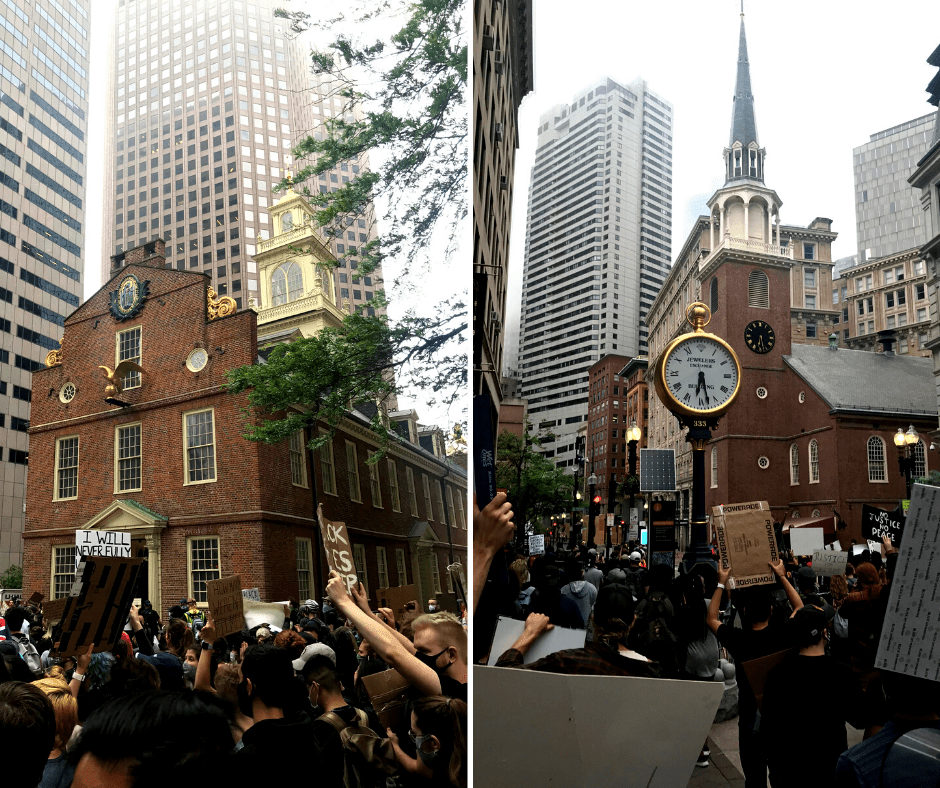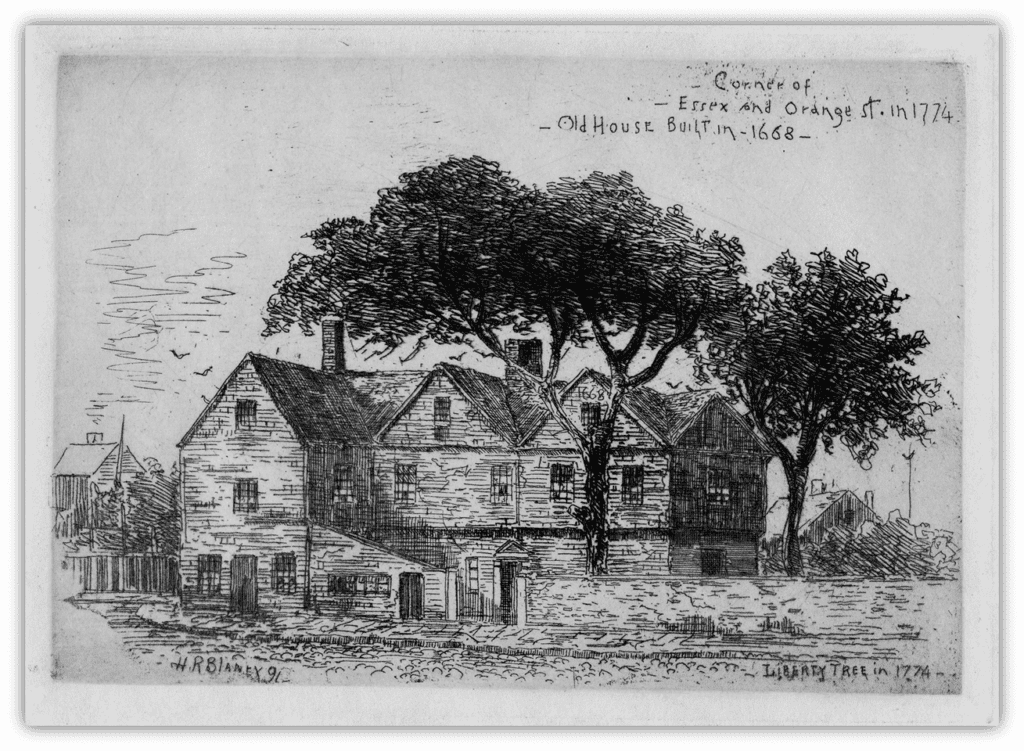
On Protest in the Streets of Boston

Written by Nathaniel Sheidley, President & CEO

The two city blocks connecting these national landmarks – Boston’s Old State House and Old South Meeting House – are hallowed ground for our American tradition of protest.
On August 14, 1765, a crowd protesting the hated Stamp Act walked this same path. They began at Liberty Tree, a great elm located at what is now the intersection of Essex and Washington Streets, where an effigy of Andrew Oliver (the official responsible for enforcement of the Stamp Act in Massachusetts) had been hung that morning. At nightfall, they marched past Old South Meeting House and through the first floor of the Town House (known today as the Old State House), alarming the government officials working on the building’s second floor.
From the Town House, they marched to the waterfront and tore down a warehouse belonging to Oliver. The broken timbers were carried to Fort Hill and lit on fire within sight of Oliver’s home. As a final expression of their anger, the crowd tried Oliver’s effigy, beheaded it, and consigned it to burn in the bonfire. Oliver resigned his position as stamp distributor in Massachusetts the following day, and no one could be found to succeed him in the office. Through protest, the crowd had effectively nullified the Stamp Act in Massachusetts.
While many in Boston expressed discomfort with what they saw as a riot, there was no disputing what the protesters had achieved. In the weeks following the protest, Bostonians gave the name “Liberty Tree” to the elm where the effigy had hung and a small group of volunteers vowed to defend Liberty Tree as a symbol of the power of ordinary people to make their voices heard. That group called themselves The Sons of Liberty.

The protests unfolding daily on our streets raise difficult questions, but it is important for us to recognize that we have grappled with these same questions for more than 250 years.
Whose voice matters?
What is our recourse, as citizens, if our voices have been silenced or overlooked?
What are our responsibilities as citizens when the lives and liberties of our families and our communities are at stake?
Are there lines we should not cross in making our voices heard?
Bostonians gave us these questions when they took to the streets in defense of their liberties 250 years ago, but they did not give us answers. That work is ours, as it has been for every generation of Americans. And perhaps it is the very work of grappling with these enduring questions that binds us to our neighbors, connects us to those who have walked the path of protest before us, and gives strength to our unfinished struggle to create a society in which all are truly free.
Learn more about events the Old State House and Old South Meeting House witnessed in the lead-up to American Independence via our virtual event, “Site-See: Rebellion in Action.”

